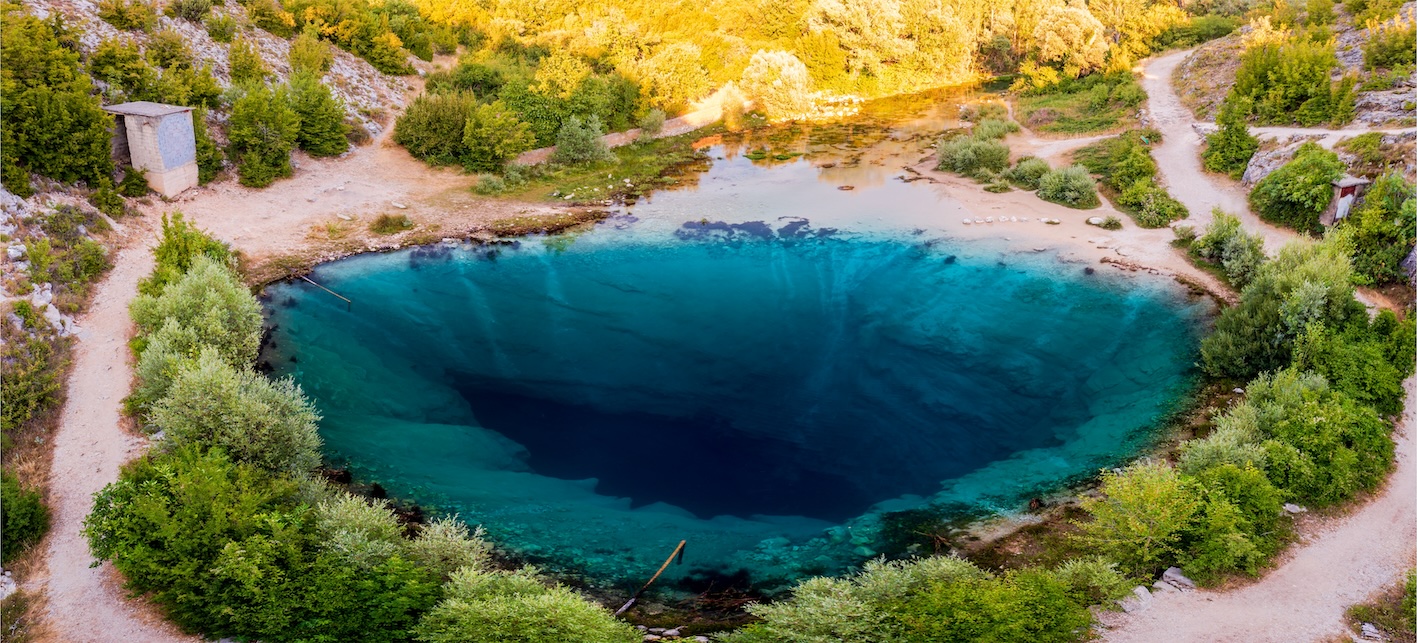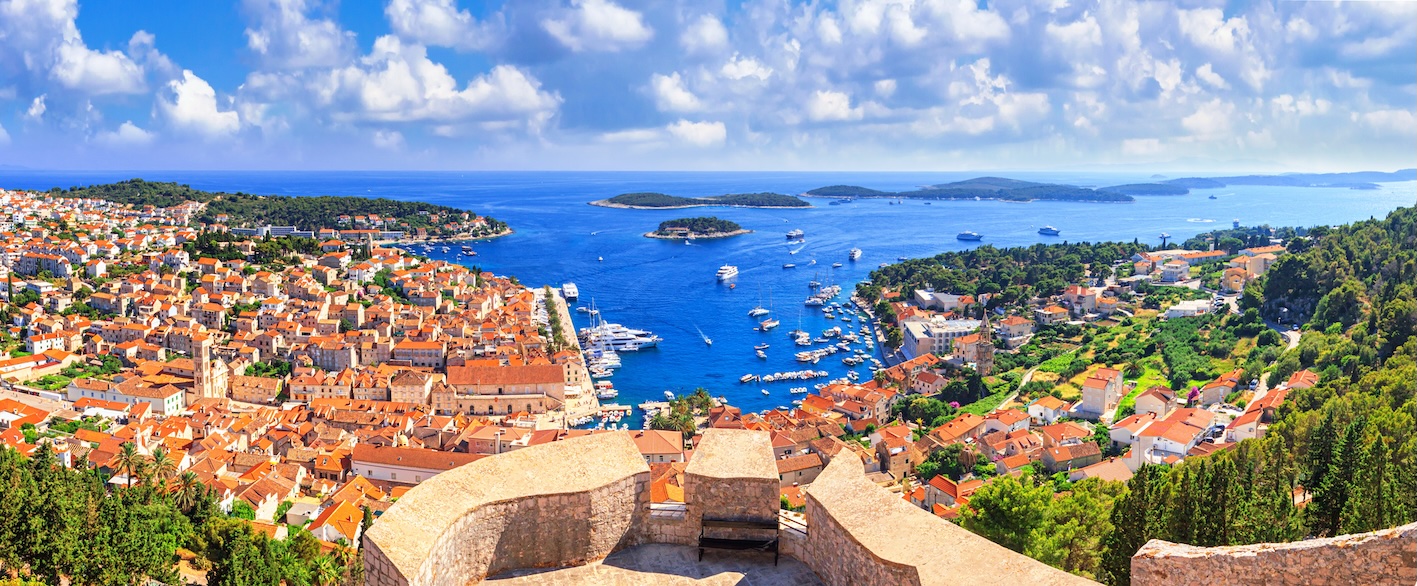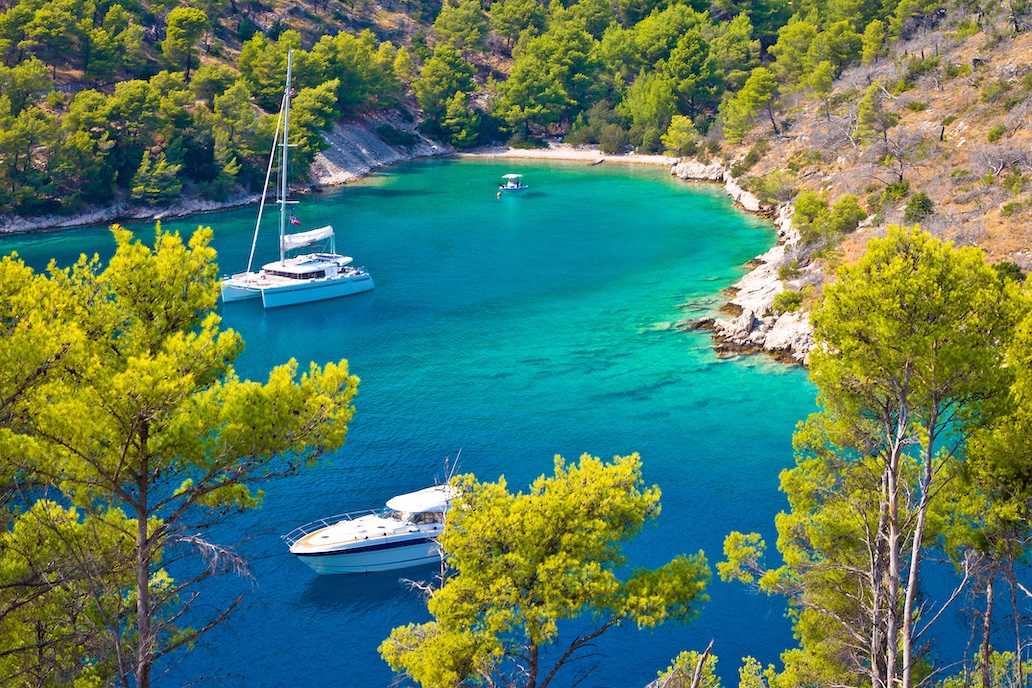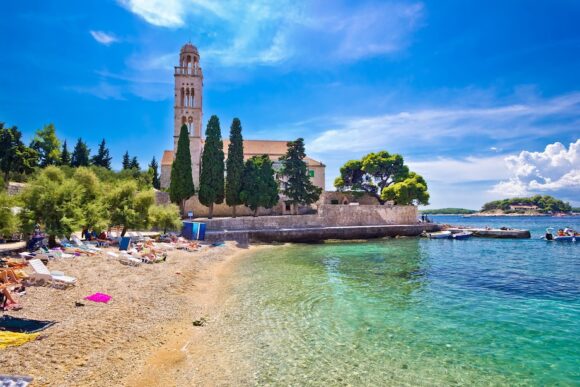By Bret Helenius, contributing writer
Nestled on the eastern edge of the Adriatic Sea, Croatia offers a mix of Mediterranean charm, ancient history, and breathtaking natural beauty. While the cities of Dubrovnik and Split are well-known to tourists, the real magic of Croatia often lies in its lesser-known destinations. Wherever you’re coming from in Germany, Croatia is a road trip worth taking — and it rewards explorers who go just slightly off the beaten path. Ready your map, plan your route, and don’t forget to pack swimwear — the Adriatic is waiting.
The Blue Hole of Croatia
One of Croatia’s true hidden wonders is the Blue Hole (Plava Jama) near the village of Draga Bašćanska on the island of Krk. This natural sinkhole plunges dramatically into the karst limestone terrain, offering a surreal contrast of colors — deep cerulean blue waters surrounded by stark gray rock.
 Kurka Geza Corey / Shutterstock.com
Kurka Geza Corey / Shutterstock.com The Blue Hole is more popular with locals than tourists, and its remote location requires a short hike, but the payoff is a stunning, quiet place to swim or explore.
Note: This is not to be confused with the Blue Cave (Modra Špilja) near Biševo, which is also beautiful but more commercialized.
The Island of Hvar: Lavender Fields and Ancient Fortresses
Hvar, often dubbed the “sunniest island in Europe,” is a blend of glamor and authenticity. While the town of Hvar is famous for its nightlife and luxury yachts, much of the island remains untouched by mass tourism.
 rustamank Shutterstock
rustamank Shutterstock Getting There by Ferry:
To reach Hvar, drive to the coastal city of Split, where car and passenger ferries operated by Jadrolinija run several times a day. The ferry to Stari Grad, one of Hvar’s main ports, takes about 2 hours. During summer, it’s wise to book tickets in advance, especially if you’re bringing a vehicle.
What to Do on Hvar:
- Visit the Fortress (Fortica) above Hvar Town for sweeping views of the Pakleni Islands.
- Explore Stari Grad, one of Europe’s oldest towns, dating back to the 4th century BC.
- Drive inland to see lavender fields, particularly beautiful in June and July.
- Swim in hidden coves near Zaraće and Dubovica Beach, away from the crowds.
The Adriatic Sea: A Jewel of Southern Europe
The Adriatic Sea defines the Croatian coastline. Its crystal-clear waters are ideal for swimming, snorkeling, kayaking, and sailing. Unlike the Atlantic, the Adriatic is warmer and calmer in summer, making it perfect for families and casual swimmers.
 xbrchx / Shutterstock
xbrchx / Shutterstock The sea also plays a key role in Croatia’s cuisine, with daily catches served in traditional konobas (taverns) across the coast. The calmness of the sea and the many islands it shelters have made Croatia one of the top sailing destinations in Europe.
Typical Croatian Food to Try
Croatian cuisine varies by region, but along the coast and on the islands, seafood dominates:
- Peka – A slow-cooked dish of meat or seafood with vegetables, made under a bell-like dome covered in hot coals.
- Black Risotto (Crni Rižot) – Made with cuttlefish and squid ink.
- Grilled Fish – Often served whole, simply grilled with olive oil and garlic.
- Pašticada – A hearty Dalmatian beef stew, marinated in vinegar and wine, typically served with gnocchi.
- Fritule – Mini fried doughnuts flavored with rum and citrus zest, often enjoyed as a sweet street snack.
Off the Beaten Path: More Hidden Gems
If you want to take your Croatian adventure further off the map, consider:
- Zavratnica Bay (near Jablanac): A secluded fjord-like inlet with turquoise water and a sunken WWII shipwreck visible beneath the surface.
- Lastovo Island: Remote and rugged, Lastovo is part of a nature park and has some of the clearest waters in Croatia.
- Galesnjak (Lover’s Island): A heart-shaped private island near Zadar, perfect for a unique boat trip or drone photo op.
Currency and Cost
Croatia uses the Euro (€), having officially joined the Eurozone in 2023. This makes budgeting easy for travelers from other EU countries. While Croatia is generally more affordable than Western Europe, prices have risen slightly with the increase in tourism, particularly along the coast and on the islands.
Getting to Croatia: Drive Times from Germany
From Germany’s southern cities, Croatia is easily accessible by car, making it a prime location for summer travel. Here are estimated drive times to Split, a central coastal city and common gateway to the islands:
- Kaiserslautern to Split: Approx. 13.5 hours (1,260 km)
- Stuttgart to Split: Approx. 11.5 hours (1,050 km)
- Grafenwöhr to Split: Approx. 10.5 hours (960 km)
Expect to cross Austria and Slovenia depending on your route — both countries require a vignette (toll sticker) for highway use. It’s also a good idea to carry your passport, as you’ll be crossing several borders.
Featured image by xbrchx / Shutterstock.com








